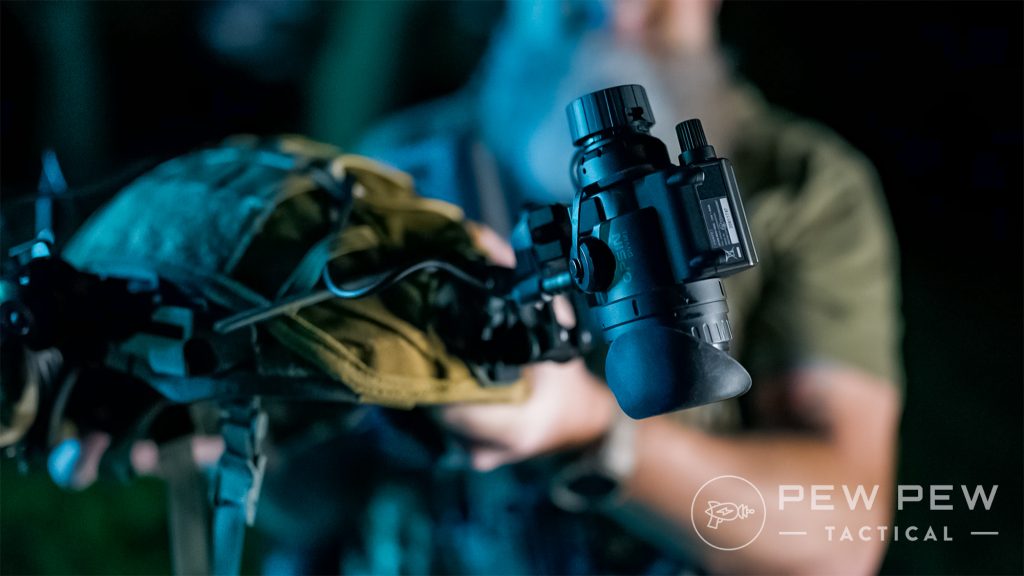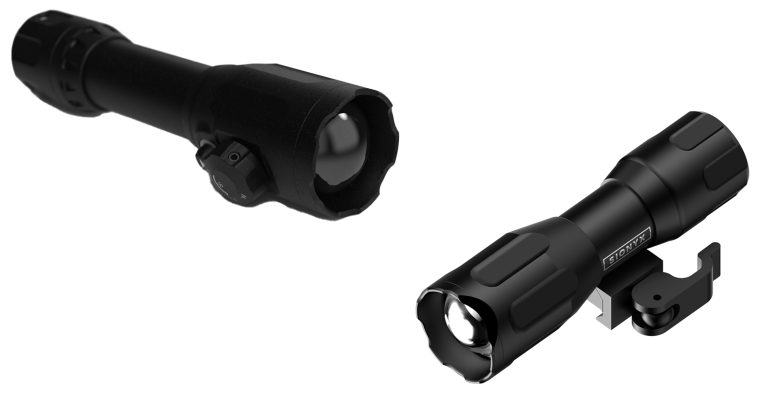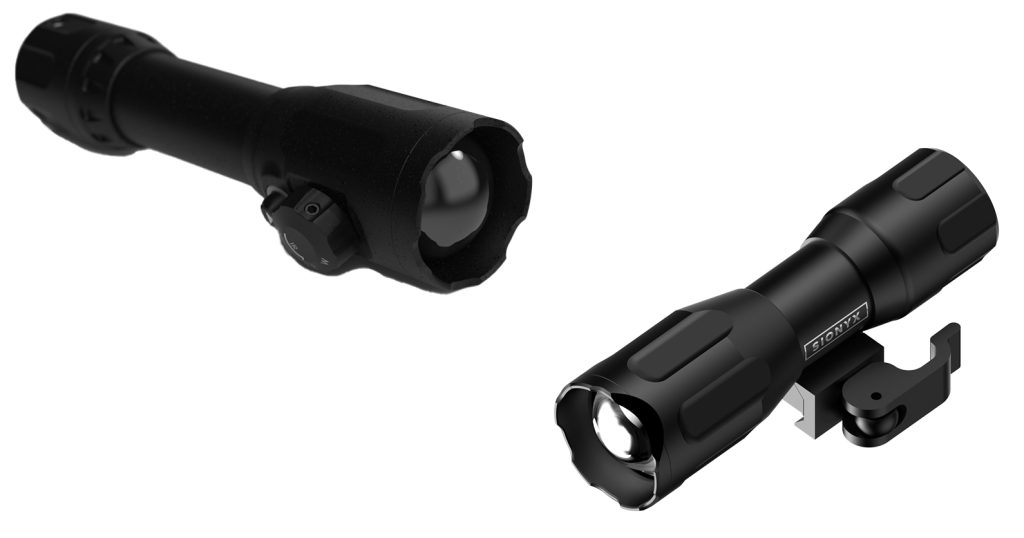The biggest debate isn’t whether or not you should run night vision (go ahead, spend that money); it’s whether analog or digital optics are better.
For a long time, digital night vision has shown huge promise but hasn’t been able to take over the industry. That gap is closing every day.
One way to make digital night vision perform better is an old trick from the analog world: infrared illumination that shines brightly for the user but isn’t visible to anyone without night vision.
Sionyx just released a pair of IR illuminators that don’t just make your light invisible to the naked eye; it’s invisible to other night vision systems.
Sionyx IR Illuminator Specs & Features
Specs
- Illumination: 1,050nm IR (helmet-mounted model) — 1,050nm IR, 950nm IR, red light, white light (4-in-1 model)
- Battery: CR123 (helmet-mounted model) — 18650 rechargeable battery (4-in-1 model)
- Maximum Run Time: 2 hours (helmet-mounted model) — 6 hours (4-in-1 model)
- Waterproof Rating: IP67
- Housing: Anodized 6061 T6 aluminum
- MSRP: $199 (helmet-mounted model) — $299 (4-in-1 model)
Features
- Allow the Opsin system to work in complete darkness
- Built to military durability standards
- Out-of-band IR wavelength is invisible to conventional night vision
The new illuminators from Sionyx come in two forms: a lightweight helmet-mounted version and a 4-in-1 weapon light. Both project a lightwave frequency (1,050nm infrared) that’s undetectable with conventional night vision optics. Both use anodized aluminum housings that are IP67 water/dust resistant.
The 4-in-1 illuminator, which should be available later this year, also comes with a traditional 950nm IR light that is visible to analog units, a visible red light, and a visible white light.

Power for the helmet-mounted illuminator comes from a single disposable CR123 battery like the ones used in other optics and weapon lights that should last two hours. The 4-in-1 illuminator uses a rechargeable battery pack that’s good for six hours.
Sionyx is all-in on digital night vision. We were impressed when we tested the Sionyx Opsin, thanks to its full-color screen, a heads-up display with critical information like your GPS position, and the ability to livestream or record video. And at just over 10 ounces, it’s light.
These new illuminators make the Opsin system much more capable in total darkness.
Sionyx lists an MSRP of $199 for the helmet-mounted illuminator and $299 for the 4-in-1 illuminator.
What do you think of the new Sionyx IR illuminators? Let us know below. For more after-dark fun, check out our guide to the best night vision scopes and optics.










Leave a Reply